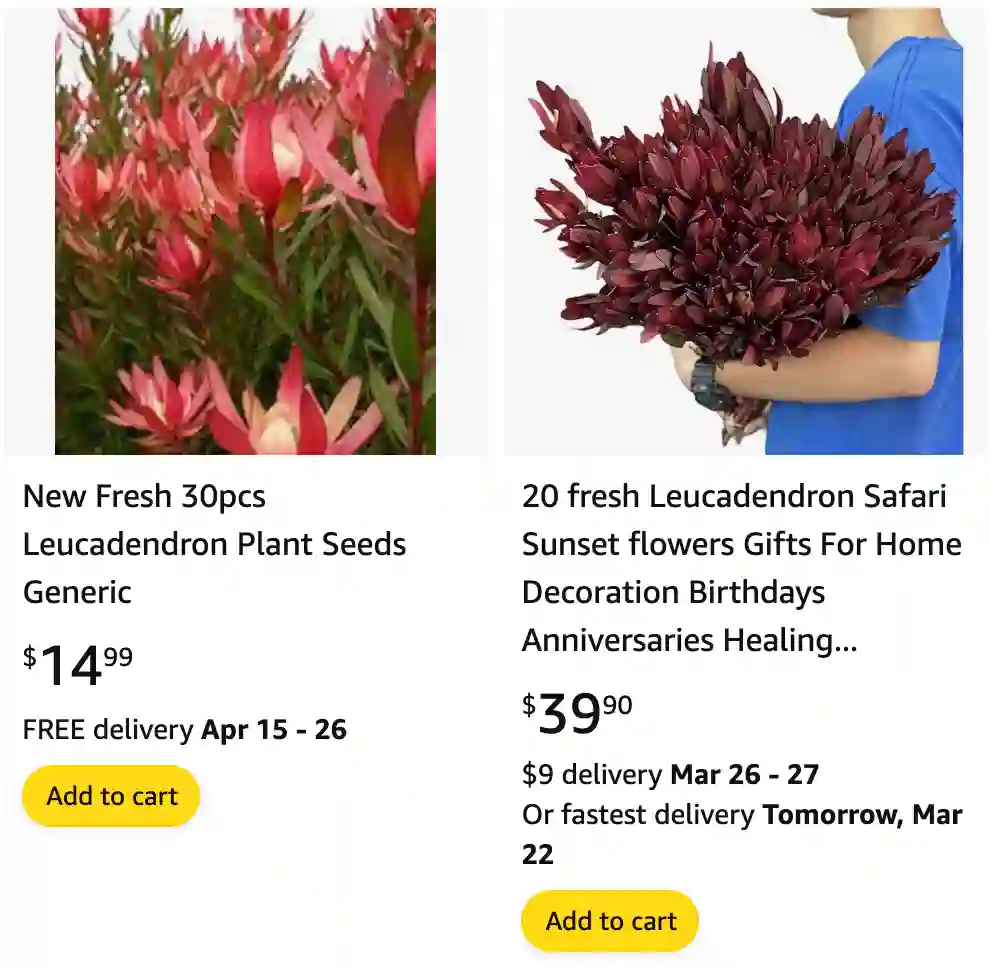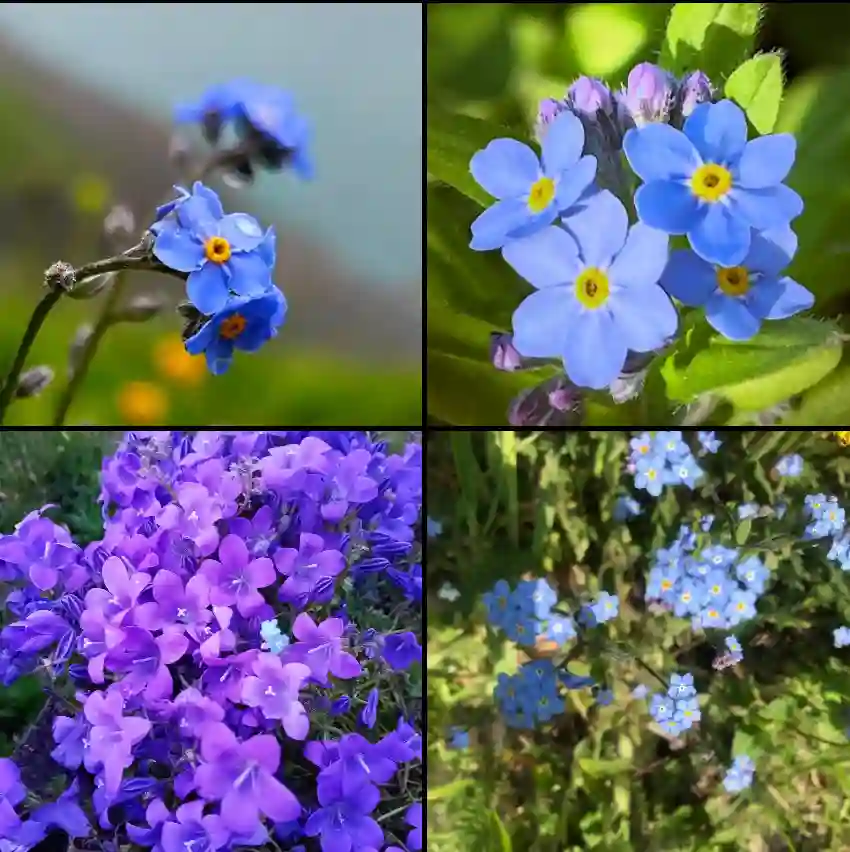
January 14 – Leucadendron
"Leucadendron, the cone bush, defines January 14."
Leucadendron symbolizes versatility and enduring beauty. You have a unique ability to adapt and thrive in diverse environments, much like this vibrant plant. Your presence is bold and colorful, bringing energy and warmth wherever you go.
My Fascination with Leucadendron
The first time I saw a Leucadendron, I was captivated. Its vibrant bracts, resembling brightly colored leaves, seemed to defy the ordinary. Native to South Africa, these evergreen shrubs belong to the Proteaceae family, a group known for its unique and diverse flora. As a plant enthusiast, I was immediately drawn to their striking appearance and the rich history they hold.
A Diverse Genus
Leucadendron is a diverse genus, boasting over 80 recognized species. Each species possesses its own distinct characteristics, ranging in size, shape, and color. Here are:
- Leucadendron album (Thunb.) Fourc.
- Leucadendron arcuatum (Lam.) I.Williams
- Leucadendron argenteum R.Br.
- Leucadendron barkerae I.Williams
- Leucadendron bonum I.Williams
- Leucadendron brunioides Meisn.
- Leucadendron burchellii I.Williams
- Leucadendron cadens I.Williams
- Leucadendron chamelaea (Lam.) I.Williams
- Leucadendron cinereum (Aiton) R.Br.
- Leucadendron comosum R.Br.
- Leucadendron concavum I.Williams
- Leucadendron conicum (Lam.) I.Williams
- Leucadendron coniferum (L.) Sieber ex Meisn.
- Leucadendron cordatum E.Phillips
- Leucadendron coriaceum E.Phillips & Hutch.
- Leucadendron corymbosum P.J.Bergius
- Leucadendron cryptocephalum L.Guthrie
- Leucadendron daphnoides Meisn.
- Leucadendron diemontianum I.Williams
- Leucadendron discolor E.Phillips & Hutch.
- Leucadendron dregei E.Mey. ex Meisn.
- Leucadendron dubium (Meisn.) E.Phillips & Hutch.
- Leucadendron elimense E.Phillips
- Leucadendron ericifolium R.Br.
- Leucadendron eucalyptifolium H.Buek ex Meisn.
- Leucadendron flexuosum I.Williams
- Leucadendron floridum R.Br.
- Leucadendron foedum I.Williams
- Leucadendron galpinii E.Phillips & Hutch.
- Leucadendron gandogeri Schinz ex Gand.
- Leucadendron glaberrimum (Schltr.) Compton
- Leucadendron globosum (Andrews) I.Williams
- Leucadendron glutinosum (Knight) Hutch.
- Leucadendron gydoense I.Williams
- Leucadendron immoderatum Rourke
- Leucadendron lanigerum H.Buek ex Meisn.
- Leucadendron laureolum (Lam.) Fourc.
- Leucadendron laxum I.Williams
- Leucadendron levisanus (L.) P.J.Bergius
- Leucadendron linifolium R.Br.
- Leucadendron loeriense I.Williams
- Leucadendron loranthifolium (Salisb. ex Knight) I.Williams
- Leucadendron macowanii E.Phillips
- Leucadendron meridianum T.M.Salter ex I.Williams
- Leucadendron meyerianum H.Buek ex E.Phillips & Hutch.
- Leucadendron microcephalum (Gand.) Gand. & Schinz
- Leucadendron modestum I.Williams
- Leucadendron muirii E.Phillips
- Leucadendron nervosum E.Phillips & Hutch.
- Leucadendron nitidum H.Buek ex Meisn.
- Leucadendron nobile I.Williams
- Leucadendron olens I.Williams
- Leucadendron orientale I.Williams
- Leucadendron osbornei Rourke
- Leucadendron platyspermum R.Br.
- Leucadendron pondoense A.E.van Wyk
- Leucadendron procerum (Salisb. ex Knight) I.Williams
- Leucadendron pubescens R.Br.
- Leucadendron pubibracteolatum I.Williams
- Leucadendron radiatum E.Phillips & Hutch.
- Leucadendron remotum I.Williams
- Leucadendron roodii Bolus
- Leucadendron rourkei I.Williams
- Leucadendron rubrum Burm.f.
- Leucadendron salicifolium (Salisb.) I.Williams
- Leucadendron salignum P.J.Bergius
- Leucadendron sericeum R.Br.
- Leucadendron sessile R.Br.
- Leucadendron sheilae I.Williams
- Leucadendron singulare I.Williams
- Leucadendron sorocephalodes E.Phillips & Hutch.
- Leucadendron spirale (Salisb. ex Knight) I.Williams
- Leucadendron spissifolium (Salisb. ex Knight) I.Williams
- Leucadendron stellare (Sims) R.Br. ex Steud.
- Leucadendron stelligerum I.Williams
- Leucadendron strobilinum (L.) Druce
- Leucadendron teretifolium (Andrews) I.Williams
- Leucadendron thymifolium (Salisb. ex Knight) I.Williams
- Leucadendron tinctum I.Williams
- Leucadendron tradouwense I.Williams
- Leucadendron uliginosum R.Br.
- Leucadendron verticillatum (Thunb.) Meisn.
- Leucadendron vinimontis Rebelo
- Leucadendron xanthoconus (Kuntze) K.Schum.
Leucadendron vs Leucospermum
I’ve had both Leucadendrons and Leucospermums in my garden. Leucadendrons’ foliage is striking, with vibrant colors that add a bold contrast. Leucospermums, though, steal the show with their stunning, intricate flowers that resemble miniature fireworks. Each brings a unique flair to the garden, but I lean towards Leucospermum for its captivating blooms that always draw attention.
Leucadendron vs Protea
I found Leucadendron to be more versatile in floral arrangements, with its unique cone-shaped bracts adding a striking touch. Protea, on the other hand, captivates with its larger, more flamboyant blooms that make a bold statement in any bouquet or garden setting.
Are leucadendron poisonous to cats?
I’ve always been cautious about what plants I bring into my home because I have pets, especially my curious cat. When I researched whether leucadendron plants are poisonous to cats, I found conflicting information. Some sources suggested they could be mildly toxic, causing gastrointestinal upset if ingested, while others said they’re generally safe. To be on the safe side, I decided to keep them out of reach of my cat, just to avoid any potential issues.
Are leucadendron poisonous to dogs?
Similarly, when I looked into whether leucadendron plants are toxic to dogs, I found mixed opinions. Some sources mentioned that they could cause mild gastrointestinal irritation if eaten, while others said they weren’t a significant concern. Given the uncertainty, I opted to keep my leucadendron plants in areas where my dog doesn’t have access to them. It’s always better to err on the side of caution when it comes to our furry friends’ health.
Can you grow leucadendron from cuttings?
I’ve had some success growing leucadendron from cuttings, but it definitely requires patience and attention to detail. I usually take cuttings from healthy, mature plants during the spring or early summer when they’re actively growing. After taking the cuttings, I dip the ends in rooting hormone to encourage root development, then plant them in a well-draining soil mix. I make sure to keep the soil consistently moist but not waterlogged, and within a few weeks to a couple of months, I start to see roots forming. It’s a rewarding process to see the cuttings take root and grow into new plants.
How fast do leucadendron grow?
Leucadendrons are known for their relatively slow growth compared to some other plants, but I find that the exact speed can vary depending on factors like the specific species, growing conditions, and care provided. In my experience, they typically grow anywhere from a few inches to a foot or so per year. While it may not seem like much progress at times, I appreciate the steady growth and the beauty of their unique foliage.
How to grow leucadendron?
Growing leucadendron successfully involves providing the right conditions to mimic their native habitat in South Africa. They thrive in well-draining soil that’s slightly acidic and prefer full sun. I make sure to water them regularly, especially during the dry season, but I’m careful not to overwater, as they’re sensitive to root rot. Adding a layer of mulch around the base of the plants helps retain moisture and suppress weeds. Overall, I find that they’re relatively low-maintenance once established, as long as they’re given the right growing conditions.
How to propagate leucadendron?
Propagation of leucadendron can be done through various methods, but I’ve had the most success with stem cuttings. I usually take cuttings in the spring or early summer from healthy, mature plants. After removing the lower leaves, I dip the cut end in rooting hormone and plant it in a well-draining soil mix. Keeping the soil consistently moist and providing bright, indirect light encourages root development. With patience and care, the cuttings usually take root within a few weeks to a couple of months, and I’m rewarded with new plants to add to my garden or share with friends.
How to prune a leucadendron?
Pruning leucadendron is important for maintaining their shape, controlling their size, and promoting healthy growth. I prefer to prune them lightly in late spring or early summer, just after their main flowering period. I remove any dead, damaged, or overcrowded branches, as well as any leggy growth to encourage bushier growth. I also prune back any overly long branches to maintain a tidy appearance. Overall, I find that regular pruning helps keep my leucadendron plants looking their best and encourages them to flower more prolifically.
When to prune leucadendrons?
Knowing when to prune leucadendrons is essential for promoting healthy growth and maintaining their appearance. I typically wait until late spring or early summer to prune them, just after their main flowering period. This timing allows me to remove any dead, damaged, or overgrown branches without risking cutting off next year’s flower buds. I find that pruning at this time also helps stimulate new growth, ensuring that my leucadendrons remain healthy and vibrant throughout the growing season.
Why is my leucadendron dying?
When I noticed my leucadendron starting to struggle, it was a bit concerning, especially since they’re typically quite resilient plants. After some investigation, I discovered that the most common reasons for a leucadendron to decline include overwatering, underwatering, poor soil drainage, or environmental stress. I checked the soil moisture level and adjusted my watering routine accordingly, making sure not to let the soil become waterlogged. Additionally, I ensured they were getting enough sunlight and provided some extra nutrients with a balanced fertilizer. With a little extra care and attention, my leucadendron bounced back, reminding me of the importance of monitoring their growing conditions closely.
If i die, water my plants!



